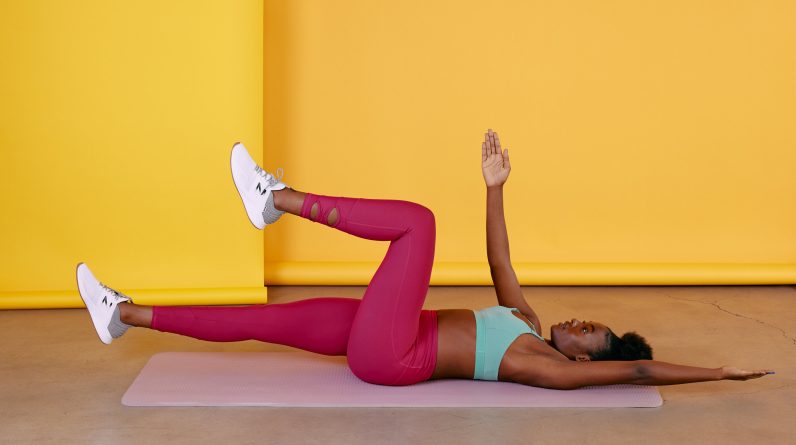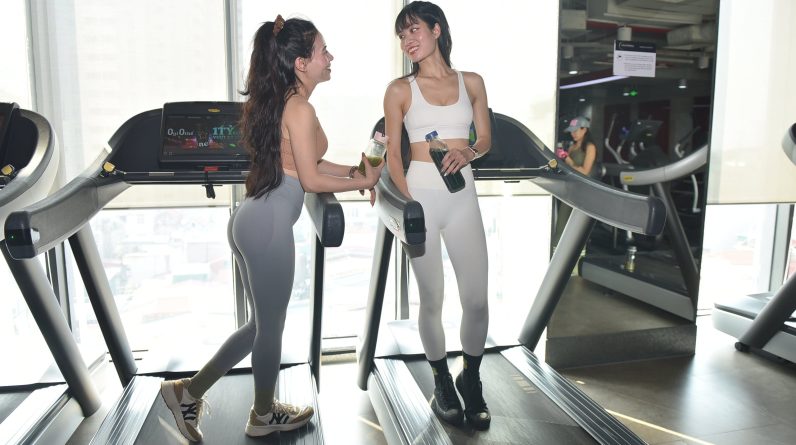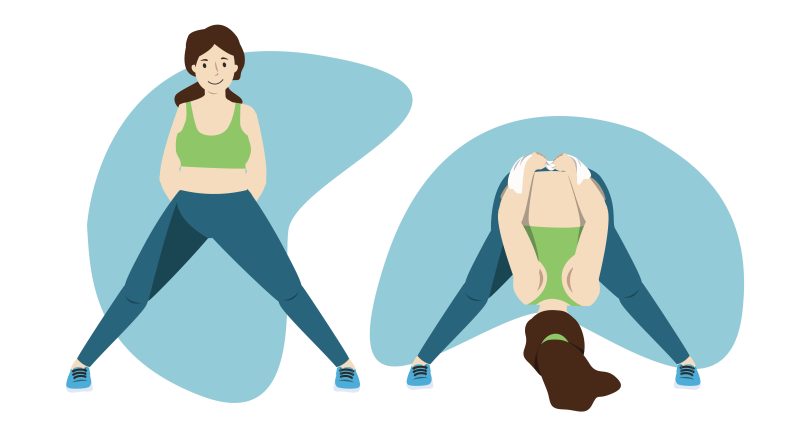
Kickstart Your Fitness Journey: An Effective Home Workout Routine for Beginners
Are you a beginner looking to embark on your fitness journey but don’t know where to start? Don’t worry; you can achieve your health and fitness goals from the comfort of your own home. In this article, we’ll guide you through an effective home workout routine tailored specifically for beginners. With dedication and consistency, you’ll be well on your way to a healthier, fitter you!
Warm-up:
Before diving into any workout, it’s crucial to warm up your muscles to prevent injuries. Spend 5-10 minutes doing light cardio exercises like jumping jacks, high knees, or brisk walking.
Bodyweight Exercises:
a. Squats: Stand with your feet shoulder-width apart and lower your body as if sitting back into an imaginary chair. Keep your knees aligned with your toes and push through your heels to return to the starting position. Aim for 3 sets of 12-15 repetitions.
Cardio Intervals:
Incorporate bursts of cardio exercises between your bodyweight exercises to increase your heart rate and burn more calories. Options include jumping rope, mountain climbers, or running in place for 30-60 seconds between sets.
Core Exercises:
a. Plank: Get into a forearm plank position with your body in a straight line from head to heels. Hold for as long as you can, aiming for at least 30 seconds to start and gradually increasing your time. b. Bicycle crunches: Lie on your back and bring your knees toward your chest. Place your hands behind your head and lift your shoulder blades off the ground, twisting your torso to bring your right elbow towards your left knee and vice versa. Aim for 3 sets of 20 repetitions (10 each side).
Cool Down and Stretch:
After your workout, take 5-10 minutes to cool down and stretch your muscles. Focus on major muscle groups for beginners, such as hamstrings, quadriceps, chest, back, and shoulders.
Rest and Recovery:
Allow your body ample time to rest and recover between workout days. Consider alternating between workout and rest days to prevent burnout and promote muscle repair for beginners.
Remember, consistency is key to seeing progress in your fitness journey. Start slowly and gradually increase the intensity and duration of your workouts as your strength and endurance improve. Listen to your body, stay hydrated, and combine your exercise routine with a balanced diet for optimal results. Stay committed, and you’ll be amazed at what your body can achieve with time and dedication for beginners. Happy exercising!
Benefits of Working Out at Home
Working out at home offers numerous benefits that make it a convenient and effective option for many individuals. Here are some of the key advantages of working out in the comfort of your own home:
Convenience:
One of the most significant benefits of a home workout is convenience. You can exercise whenever you want, without worrying about gym hours or commute time. Whether it’s early in the morning or late at night, you have the flexibility to fit your workout around your schedule.
Privacy:
For some people, the idea of working out in a public gym can be intimidating or uncomfortable. Exercising at home provides a private and judgment-free environment where you can focus solely on your fitness goals without feeling self-conscious.
Cost-Effective:
Gym memberships and fitness classes can be expensive. By working out at home, you save money on monthly fees, transportation costs, and even pricey workout attire. All you need is some basic equipment, which can be as simple as resistance bands or a set of dumbbells.
Customization:
At home, you have the freedom to design a workout routine tailored specifically to your needs and preferences. Whether you’re interested in strength training, cardio, yoga, or a combination of workouts, you can curate a routine that aligns with your fitness goals.
Time-Saving:
Home workouts eliminate the need to travel to and from the gym, saving you valuable time. With shorter workout sessions, you can seamlessly integrate fitness into your daily routine without disrupting other commitments.
Comfortable Environment:
Exercising at home allows you to create a comfortable and familiar atmosphere. You can play your favorite music, wear what you feel most comfortable in, and adjust the temperature to your liking, enhancing the overall workout experience.
Family Involvement:
Working out at home can be a family affair. You can involve your partner, children, or even pets in your exercise routine, making it a fun and bonding experience for beginners.
Reduced Distractions:
Public gyms can be busy and crowded, leading to distractions and longer waiting times for equipment. At home, you can focus entirely on your workout without interruptions, leading to more efficient and effective sessions.
Safety and Hygiene:
During times of illness outbreaks or when you’re concerned about germs, working out at home provides a controlled and clean environment, minimizing exposure to potential health risks.
Long-Term Investment:
Setting up a home gym or investing in workout equipment may require an initial investment, but it can be a cost-effective long-term solution. The equipment is yours to keep and use for years to come, making it a valuable investment in your health and fitness.
Whether you’re a fitness enthusiast or just starting your workout journey, exercising at home offers numerous benefits that cater to different needs and preferences. It allows you to take charge of your fitness routine, leading to improved consistency and better results over time.
Equipment Needed for Home Workout Routine
Resistance Bands
They offer a great range of resistance for exercises and are portable.
Yoga Mat
It provides a cushioning surface that helps during exercises that require lying down.
Jump Rope
It’s a fun equipment for warmup and cardio and can be easily stored.
Warm Up and Stretching
“Preparation before a workout is essential for injury prevention.”
A proper warmup increases body temperature and raises the heart rate, while stretching helps to improve flexibility and mobility. A few minutes of jumping jacks, jogging, or skipping rope, followed by stretching exercises like toe touches, lunges, pushups, and sit-ups can effectively bring the body in motion.
Home Workout Routine for Beginners
| Exercise | Sets and Reps |
| Squats | 3 sets of 12 reps |
| Push-ups | 3 sets of 10 reps |
| Lunges | 3 sets of 12 reps |
| Plank | 3 sets of 30 seconds each |
| Crunches | 3 sets of 12 reps |
This simple routine targets different muscle groups and is perfect for beginners. These exercises can be performed anywhere in your home, do not require any equipment and take around 20 minutes to complete. Always remember to have some water keep your breathing steady as you perform each set.
The 4-Week Beginner Home Workout Routine:
Here’s a sample 4-week beginner home workout routine:
Week 1:
Day 1: Full Body Workout
- Warm-up: 5-10 minutes of light cardio (e.g., marching in place, jumping jacks).
- Bodyweight Squats: 3 sets of 10 reps.
- Push-ups (can be done on knees if needed): 3 sets of 8 reps.
- Dumbbell Rows (use water bottles or light household items if you don’t have dumbbells): 3 sets of 10 reps per arm.
- Plank: Hold for 20-30 seconds, 3 sets.
Day 2: Cardio
Choose one of the following activities and do it for 20-30 minutes:
- Brisk walking around your neighborhood.
- Jogging or running in place.
- Jump rope (if you have one).
- Dancing to your favorite music.
Day3: Rest Day
Day4: Total Body Workout
- Warm-up: 5-10 minutes of light cardio.
- Dumbbell Lunges: 3 sets of 10 reps per leg.
- Dumbbell Shoulder Press: 3 sets of 10 reps.
- Bodyweight Glute Bridges: 3 sets of 12 reps.
- Bicycle Crunches: 3 sets of 15 reps per side.
Day5: Cardio
Choose a different activity from Day 2 and do it for 20-30 minutes.
Day 6: Rest Day
Day 7: Active Rest
Engage in light physical activity, such as going for a walk or doing some gentle stretching.
Week 2:
During Week 2, keep the same exercises but increase the intensity slightly. You can do this by adding more reps or sets or by using slightly heavier weights (if applicable).
Week 3:
During Week 3, consider incorporating some HIIT (High-Intensity Interval Training) into your routine. This involves alternating short bursts of high-intensity exercise with periods of rest or lower-intensity activity. For example, you could do 30 seconds of jumping jacks followed by 30 seconds of rest, and repeat this cycle for 10-15 minutes.
Week 4:
For the final week, challenge yourself by increasing the intensity of your workouts further. You can add more complex exercises or increase the weights you’re using (if applicable). Focus on maintaining proper form and breathing throughout the exercises.
Always remember to cool down after each workout and stretch to prevent muscle soreness and improve flexibility. Hydration and a balanced diet are also crucial components of any fitness routine.
Please note that this is a general guideline, and individual fitness levels may vary. Feel free to adjust the intensity and exercises to suit your needs and abilities. If you’re unsure about certain exercises, consider seeking guidance from a certified fitness trainer or coach. Stay consistent and committed to your routine, and you’ll be on your way to achieving your fitness goals.
Keep a record of your workouts and track your progress to motivate yourself and keep yourself accountable.
So, let’s get started with this beginner’s workout routine, and experience the transformation of mind and body towards a healthier and happier you.






